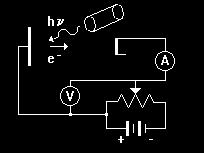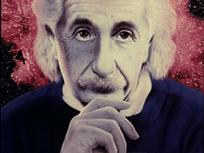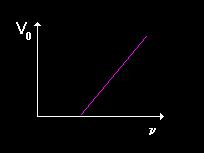The photoelectric effect
 When light falls on a metal plate, electrons are emitted from it. This metal plate is called the emitter.
The electrons are collected at another plate called the collector.
The voltage between the emitter and the collector can be varied and the resulting "photoelectric current" has two characteristics:
When light falls on a metal plate, electrons are emitted from it. This metal plate is called the emitter.
The electrons are collected at another plate called the collector.
The voltage between the emitter and the collector can be varied and the resulting "photoelectric current" has two characteristics:
- The energy of the emitted electrons is independent of the light intensity,
- light whose frequency is lower than some threshold does not result in emission of electrons, even for most intense beams of light.
Classical theory would conclude that the emitted electrons must acquire their kinetic energy from the light beam. Hence increasing the intensity of the light beam would deliver more energy to the electrons. Albert Einstein (1905) showed that the experimental results could be described by
where ![]() is the kinetic energy of the photo-electrons,
is the kinetic energy of the photo-electrons,
![]() is Planck´s constant,
is Planck´s constant,
![]() is the frequency of the incident light and
is the frequency of the incident light and
![]() is the work function of the metal,
i.e. the amount of energy needed to remove an electron from the metal surface.
is the work function of the metal,
i.e. the amount of energy needed to remove an electron from the metal surface.
 Einstein interpreted this result by postulating that light always comes in the form of small packets,
light quanta or photons,
and that the amount of energy in each photon is
Einstein interpreted this result by postulating that light always comes in the form of small packets,
light quanta or photons,
and that the amount of energy in each photon is
![]() . This in contrast to the belief that light consists of electromagnetic waves.
. This in contrast to the belief that light consists of electromagnetic waves.
In the photoelectric effect an electron absorbs a single photon whose energy becomes the energy of the electron.
The light intensity is given by the number of light quanta per time unit.
If the metal plate must be charged to a voltage
![]() in order to offset the kinetic energy and reduce the electron current to zero it follows that
in order to offset the kinetic energy and reduce the electron current to zero it follows that
 The light intensity affects the number of photons and therefore the magnitude of the photoelectric current,
but does not affect the cut-off voltage
The light intensity affects the number of photons and therefore the magnitude of the photoelectric current,
but does not affect the cut-off voltage ![]() which is determined by the frequency.
which is determined by the frequency.
![]() is a linear function of the frequency of the incident light,
as demonstrated experimentally by Millikan who measured
is a linear function of the frequency of the incident light,
as demonstrated experimentally by Millikan who measured ![]() for monochromatic light of various frequencies.
for monochromatic light of various frequencies.